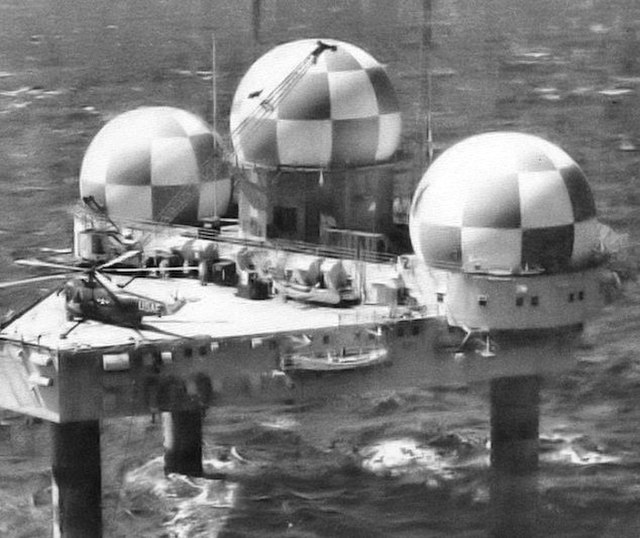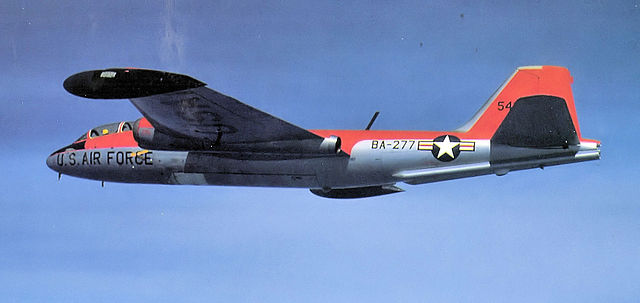Texas Towers were a set of three radar facilities off the eastern seaboard of the United States which were used for surveillance by the United States Air Force during the Cold War. Modeled on the offshore oil drilling platforms first employed off the Texas coast, they were in operation from 1958 to 1963. After the collapse of one of the towers in 1961, the remaining towers were closed due to changes in threat perception and out of a concern for the safety of the crews.
Texas Tower 3
Texas Tower 2; note tropospheric scatter dish antennae on edge of platform
Texas Tower 4 before installation of cross-braces
Aerospace Defense Command
Aerospace Defense Command was a major command of the United States Air Force, responsible for air defense of the continental United States. It was activated in 1968 and disbanded in 1980. Its predecessor, Air Defense Command, was established in 1946, briefly inactivated in 1950, reactivated in 1951, and then redesignated Aerospace rather than Air in 1968. Its mission was to provide air defense of the Continental United States (CONUS). It directly controlled all active measures, and was tasked to coordinate all passive means of air defense.
Convair F-106A Delta Dart of ADC's 5th Fighter-Interceptor Squadron near Mount Rushmore (lower right background)
Artist's impression of the North American XF-108 Rapier
One of the three Lockheed YF-12A prototypes had Air Defense Command markings (vertical stabilizer nearest center) during 1963 Edwards testing by AFSC's 4786th TS. Using the AN/ASG-18 from the F-108 Rapier program and Falcon missile developed for the F-108A, the Mach 3 interceptor was funded by Congress with $90 million for a 14 May 1965 USAF order of 93 F-12B aircraft (cancelled by SECDEF).
B-57E, AF Ser. No. 55-4277, a target towing aircraft of the 8th Bomb Squadron at Yokota AB, Japan in 1958. Note the bright orange paint on the upper fuselage and wings







